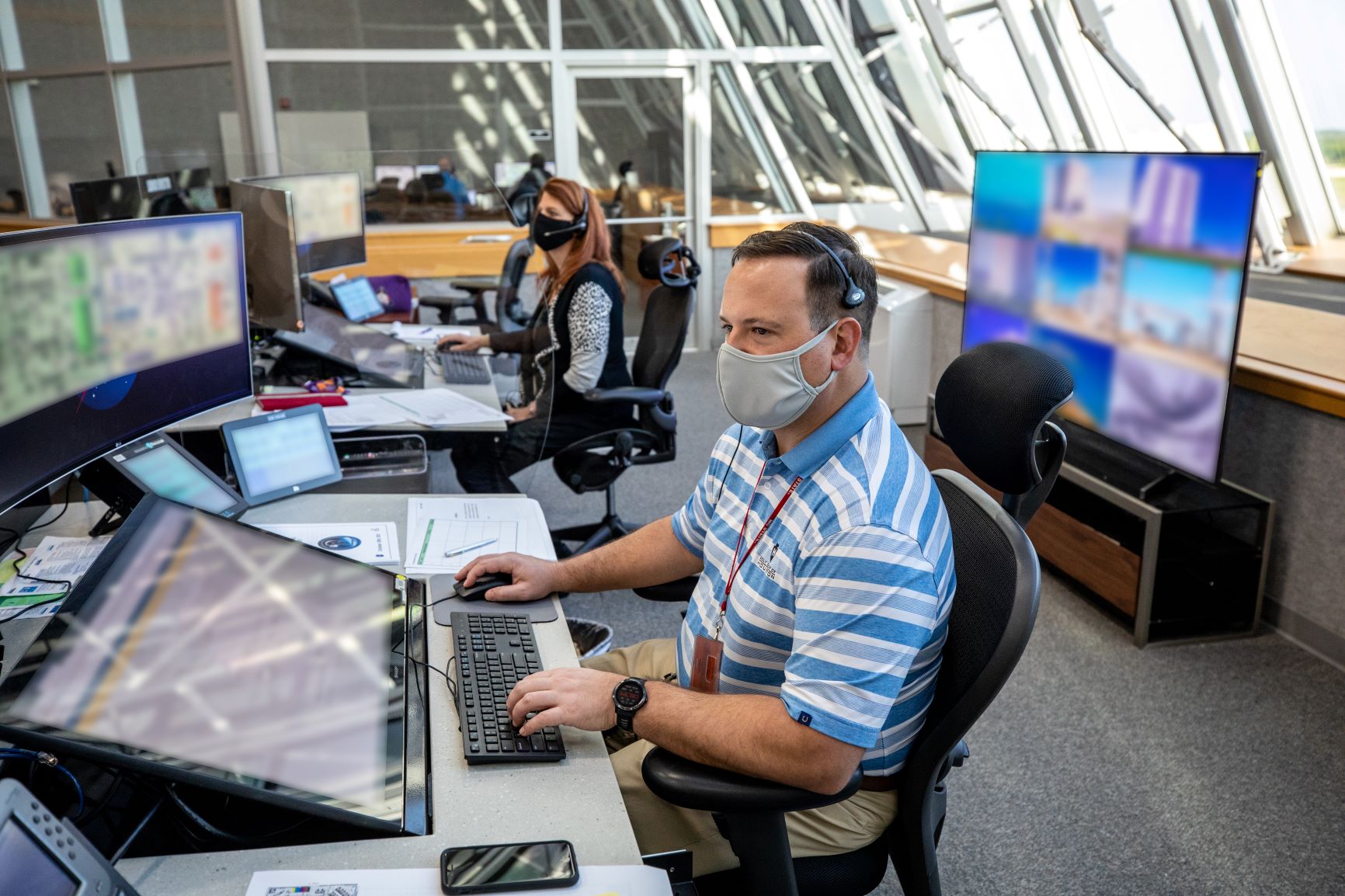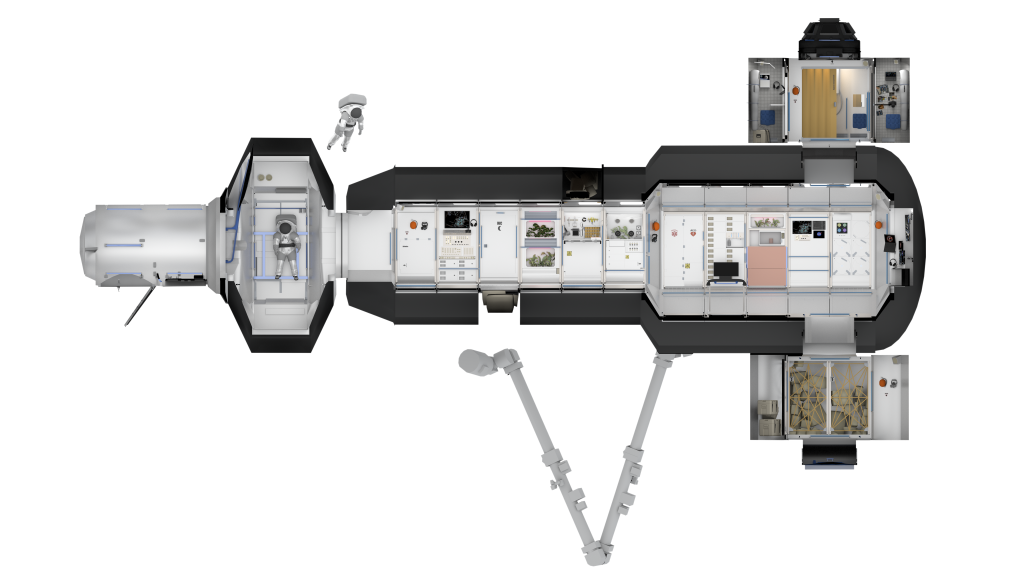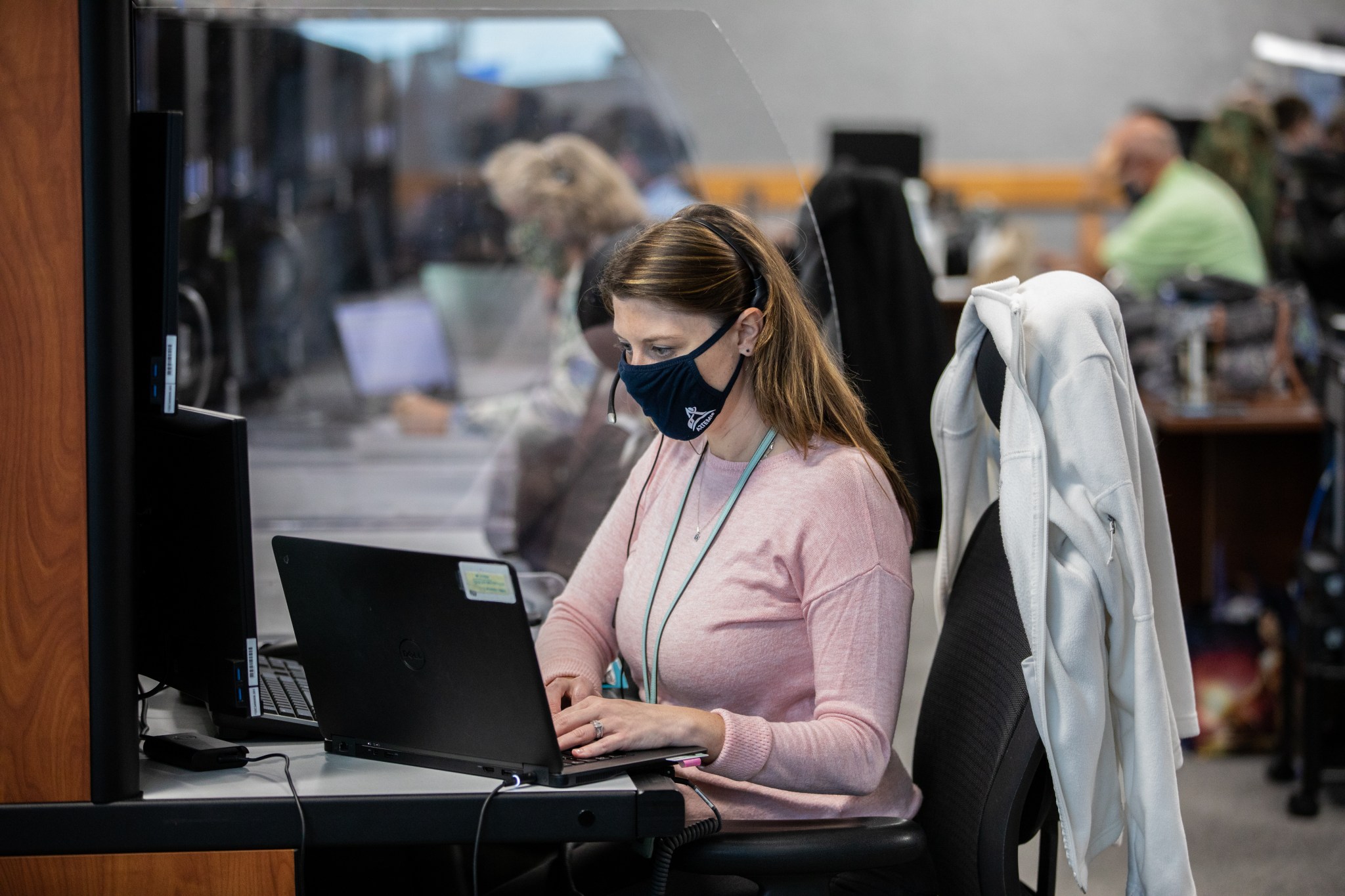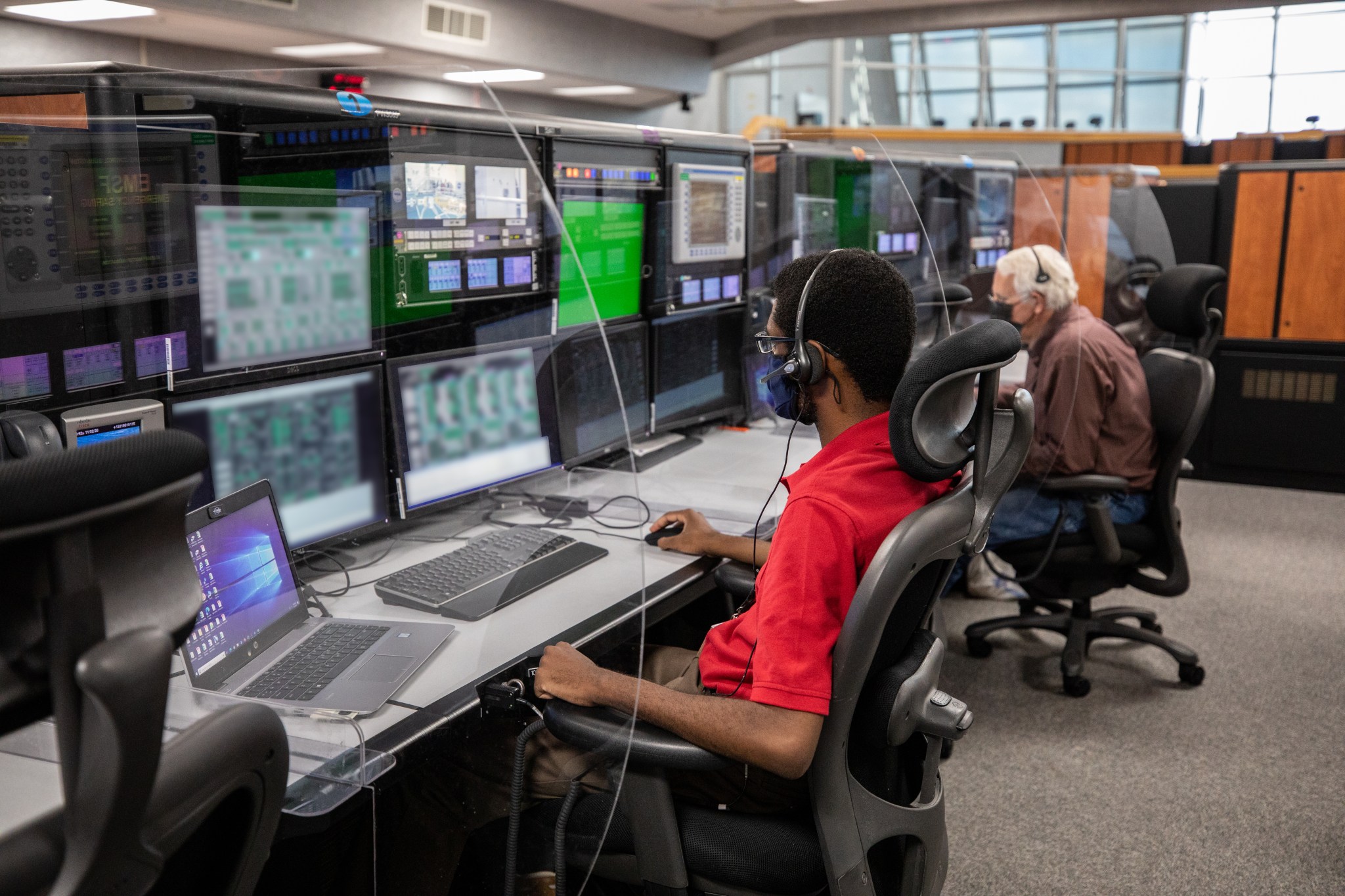
By Linda Herridge
NASA’s John F. Kennedy Space Center
NASA’s Space Launch System (SLS) rocket will propel the Orion spacecraft on a journey beyond the Moon and back to Earth during an uncrewed flight test known as Artemis I. Well before liftoff, a group of engineers will be inside the Launch Control Center at NASA’s Kennedy Space Center in Florida, where they will monitor the loading of cryogenic liquid hydrogen and liquid oxygen – super-cooled fuels – into the rocket.
To test this all-important tanking process, engineers from NASA’s Exploration Ground Systems and contractor Jacobs recently took their seats at consoles in Kennedy’s Firing Room 1. During a simulated launch, they tackled any challenges that arose and monitored the system’s performance.
“The [cryo] team always brings their ‘A’ game,” said Charlie Blackwell-Thompson, NASA Artemis launch director at Kennedy. “During these loading simulations, they demonstrate that they will be ready on launch day.”
Diane Stees, an engineer and former chief of the cryogenic propulsion console during the shuttle program, serves as the NASA lead for the Cryogenic Propulsion Ground and Flight Application Software Team. The software team has 20 members with a mix of seasoned and newer engineers.
Challyn Pfifer, a Jacobs cryogenic liquid hydrogen software technical lead, is one of the newer engineers. She sits on console for the liquid hydrogen team, which oversees loading the rocket and continuously monitors the system through launch.
“It’s an amazing honor and experience to be part of the next generation of space launches with the Artemis program; to be paving the way for future aerospace engineers who dream of launching rockets,” Pfifer said. “It’s also an uplifting experience to see more and more women get involved in the space program. I take great pride knowing I am a part of something bigger than myself.”
She added that the Artemis program benefits from having experienced engineers who launched space shuttles as well as new engineers who offer a different outlook and way of approaching the tasks at hand.
One of the experienced engineers is John Sterritt. He began his career with Rockwell International in October 1979 as a main propulsion systems engineer and worked on every space shuttle launch. Now a senior engineer and cryogenic propulsion launch system specialist with Jacobs, he transitioned to the SLS rocket in March 2013 and works closely with the hazardous gas detection system engineers.
“It’s always exciting to bring a new rocket online and bring some of that shuttle knowledge forward,” Sterritt said.
Sterritt monitors the internal volumes of the core and interim cryogenic propulsion stages, including the engines, propulsion systems, and tank interfaces, to verify that the detected levels of hydrogen, oxygen, and helium do not pose a threat to the rocket or spacecraft. In addition, Sterritt ensures the team takes appropriate actions if the levels exceed the prescribed limits for launch.
Ed Sikora, a propulsion specialist with the Jacobs team, also brings his Space Shuttle Program knowledge to the SLS team. Sikora arrived at Kennedy in May 1982 and supported 132 space shuttle flights. In 2015, he started writing ground systems requirements, working on the software, and participating in launch simulations in the firing rooms.
With more ground support equipment for Artemis than there was for the Space Shuttle Program, Sikora said it helps engineers working in the firing rooms to know how the hardware interfaces with the software when you push the button.
“It humbles me,” Sikora said. “We’re playing a part in putting astronauts back on the Moon and getting ready for human exploration of Mars.”



























